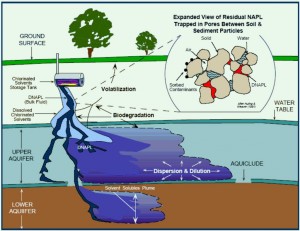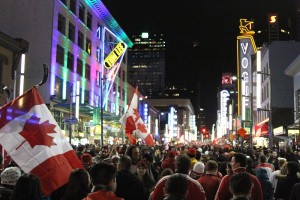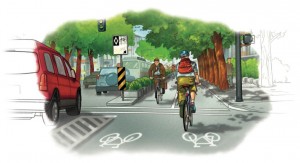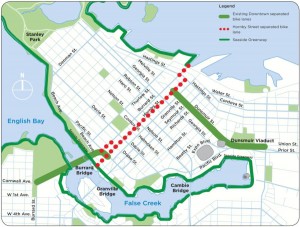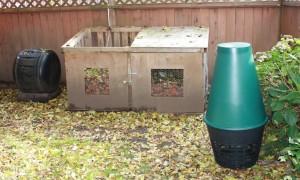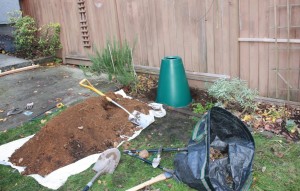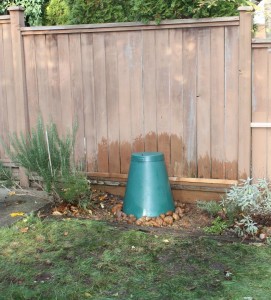The news seems bad, a toxic blob is waiting under our new waterfront park, ready to strike down our children and any fish silly enough to brave the New Westminster waterfront. Proof again that our Mayor bought a bag if cursed seeds in a pre-election rush to appease the milling hoards…
Ugh.
Contaminated Sites happen to be an area where I have some technical knowledge. Note, my information here is limited to the reports that the City have made available, and the sporadic news reports, and I am not legally entitled to provide technical advice on this, but what the hell. Everyone else has a misinformed opinion. Here is mine.
The news report that this is a “high risk” site does not mean people or fish are currently or imminently threatened by it. This is simply a procedure that all Contaminated Sites undergoing Independent Remediation go through. The evaluation involves a whole bunch of criteria. If any one of them apply, the site is determined to be “high risk”. Here is the criteria table from the Ministry of Environment: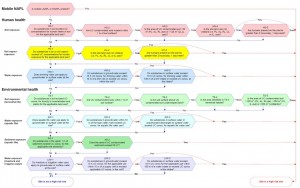
(click to zoom it)
The list is comprehensive, but based on the media reports, it seems the trigger here is chlorinated solvents, 8m below the surface. So the only risk criterion that applies is “mobile DNAPL”. With the Ministry saying it is not getting in to the River, it seems the only pathway to the actual environment is not open. So the risk is here may be “high”, but in a future-case sense.
Nothing says anyone or anything is going to die right now from this. The classification means that there is a significant amount of contamination, and that there is potential for this contamination to cause harm.
So if you own and are cleaning up a contaminated site, what does it mean to have your site designated “high risk”? It means that the Ministry has to be informed. That’s it.
Does it mean it will cost more to clean the site? Not necessarily.
Does it mean that we have to accelerate the clean-up process, or it will take longer to clean up? Not really.
Does it mean the site has to be physically remediated and cannot undergo risk assessment and management? Nope.
Does it mean the City Park is doomed? Not yet.
Does it even mean the site is making people sick or hurting fish? Not likely.
It is also silly of Voice to suggest somehow that High Risk determination is proof that the City did not do “due diligence” in 2008. The Site Risk Classification criteria did not exist until June 2010. The City did the environmental studies it felt it required, the City knew the site was contaminated, knew the scope of the contamination as well as they could with reasonable investigation efforts, and was working on the advice of a qualified Environmental Consultant. I don’t know what else they could have done.
Now onto the topic of the “Toxic Blob” itself. Notwithstanding all the above, the problem is not a minor one. DNAPL (Dense, Non-Aqueous Phase Liquids) are petroleum products that are denser than water. That means that instead of going down to the water table and spreading out on top of it (like so much olive oil on the balsamic vinegar of your dippy plate at Anducci’s), this stuff sinks through the water table until it hits some layer of soil it cannot penetrate. Sometimes that layer is really far down.
This sometimes makes it difficult to manage, and challenging to clean up, as you can’t just dig down to the water table and scoop it out, like you might with fuel oil. A more technical approach is required, but, and I can not emphasize this enough, typical for waterfront brownfields in BC. These kinds of challenges were faced by Vancouver in False Creek and the Olympic Lands, Victoria at Dockside Green, North Vancouver at the Pier… I don’t think the consultants or the City were surprised to run into them here.
From the press reports, this is “chlorinated solvents”. That likely includes tetrachloroethylene (“Perc”), trichloroethylene (“TCE”), or carbon tetrachloride (“Halon 104”). To most people in Contaminated Sites work, that suggests one thing: drycleaners. There are some significant wide-area sites in BC where drycleaners (before there were strict laws about this sort of thing) dumped solvents wherever they could, and caused large contamination plumes. However, these solvents were also used widely industrially and commercially, so it will be neigh impossible to point out a single cause for this plume. And it is unlikely chasing down the source will do anyone any good anyway, as they are unlikely to be forced to pay for the clean-up. The “train derailment” theory fails Occam’s razor, as more mundane excuses (historic washing of equipment with Perc, a drycleaner located uphill in the commercial part of town, etc.) are much more likely.
Long and short: stop worrying about Blobs.
